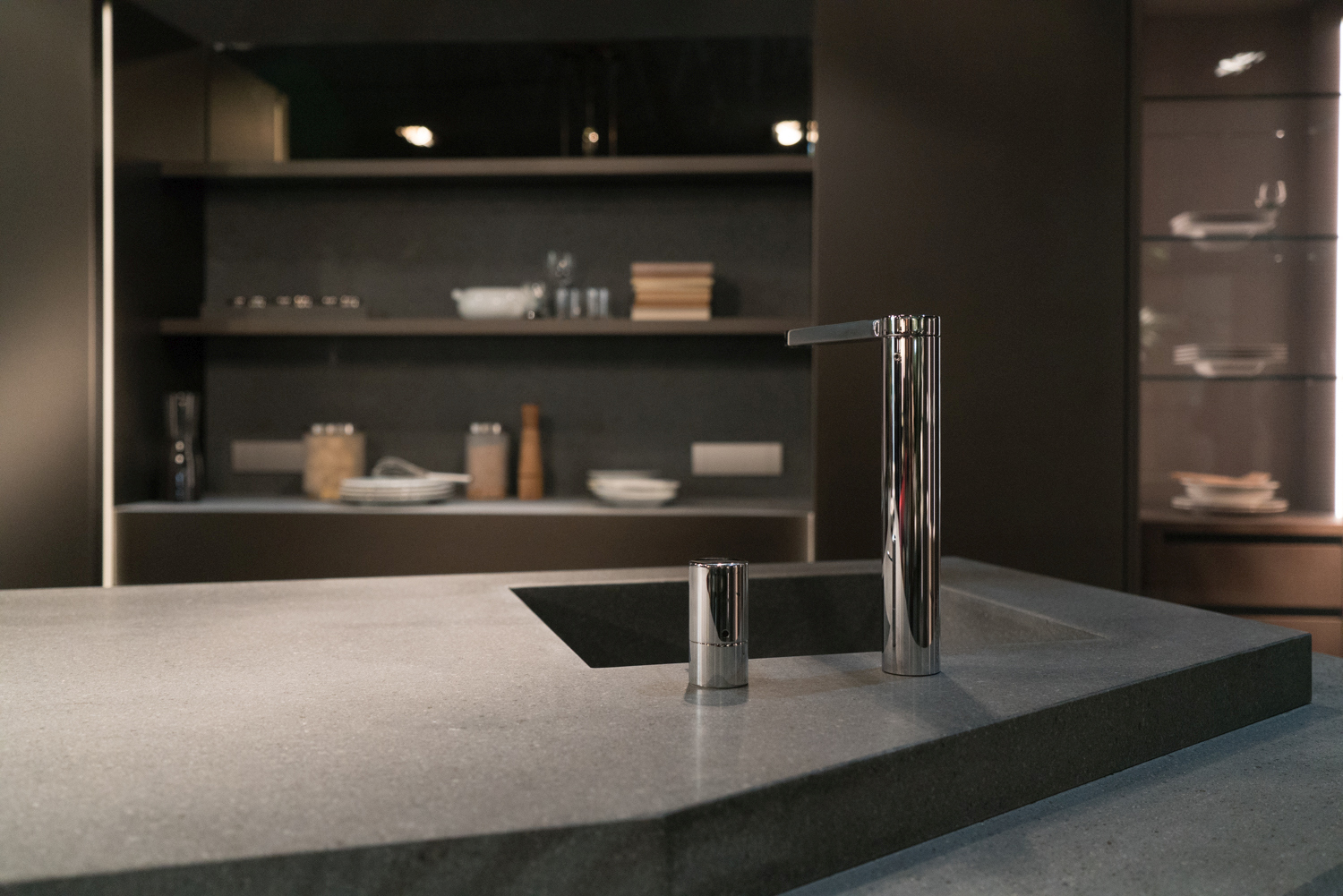
Sintered stone is a mix of minerals formed into a slab through sintering – a process of compacting and heating. Unlike Quartz, sintered stone contains no binders or resins.
Sintered stone is considered a synthetic material, but its ingredients are natural and may include granite minerals, clay, natural oxides, and glass minerals.
Sintered Stone Uses
You might be seeing sintered stone pop up in more kitchens, but sintering dates back over 25,000 years ago, when people used this method to create bricks, ceramics, and other objects.
Today, sintered stone is one of the best materials for countertops, flooring, and dining tables. It’s heat-resistant, scratch-resistant, UV-resistant, and eco-friendly. It has an appearance similar to that of Quartz or porcelain and comes in many colors and varieties that mimic natural stone.
Sintered Stone Cleaning and Maintenance
Unlike other stone countertops, sintered stone doesn’t require a sealer. Clean it with a rag, soapy water, or your favorite Ph-neutral multipurpose cleaner. Sintered stone is unlikely to stain thanks to its low porosity, but you should still wipe away spills as soon as possible.

The Disadvantages of Sintered Stone
Before purchasing your first sintered stone counter or floor, there are a couple of disadvantages to consider:
- Many types of sintered stone have veining that doesn’t run all the way through, so if you chip the counter’s edge, the pattern won’t match up.
- Sintered stone isn’t indestructible – if you hit the edge or middle of the counter with a sharp, heavy object, it can crack or chip.
- Few sintered stone manufacturers mean difficulty finding the product or a pattern you like.
Sintered Stone Cost
Sintered stone costs $60 – $120 per square foot, including material and installation. Sintered stone is not a DIY-friendly material. If you try to install it yourself, you’ll risk cracks or a broken slab.
Where to Buy Sintered Stone
You can find sintered stone slabs at most countertop and natural stone resellers. Some big box stores, like Lowes, even carry sintered stone bathroom counters. Dekton, Neolith, Lapitec, and Laminam are the most popular sintered stone brands.
Sintered Stone vs. Quartz
Sintered stone and Quartz are engineered stones with similar appearance and costs. Neither requires sealers, and both are water-resistant. A significant difference between the two is in the manufacturing process. To make quartz countertops, manufacturers use binders and toxic resins. Sintered stone requires heat and pressure only, making it a more eco-friendly product.
Sintered stone fares better with heat, while Quartz may damage if exposed to a pan at 150°F or more. On the other hand, Quartz is less likely to crack or chip since it contains resins.
Examples of Sintered Stone Countertops
Here’s a look at kitchens with sintered stone countertops.
A Neolith Sintered Stone Kitchen Counter

The Neolith countertop on this kitchen island is white with light gray veining. It looks similar to marble or Quartz with a high sheen.
Dekton Countertop and Waterfall Island

Dekton sintered stone covers this contemporary kitchen’s island, backsplash, and countertop. The stone has a natural, low-luster look and fits most design styles.
Sintered Stone Counter and Backsplash

The designers chose white Neolith counters for this bright and airy kitchen. The light gray veining is thick, making a statement against the all-white cabinets and counters.






